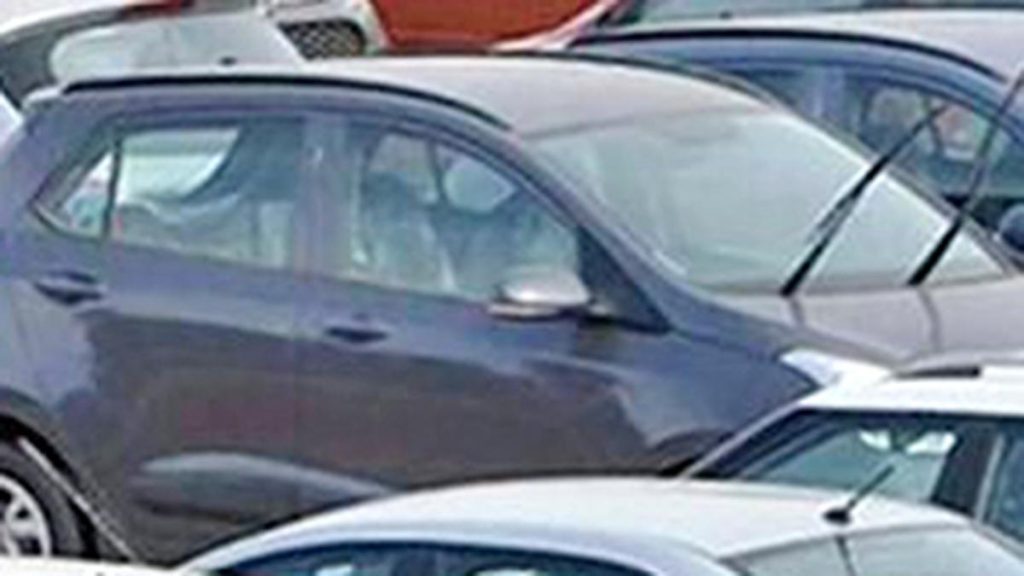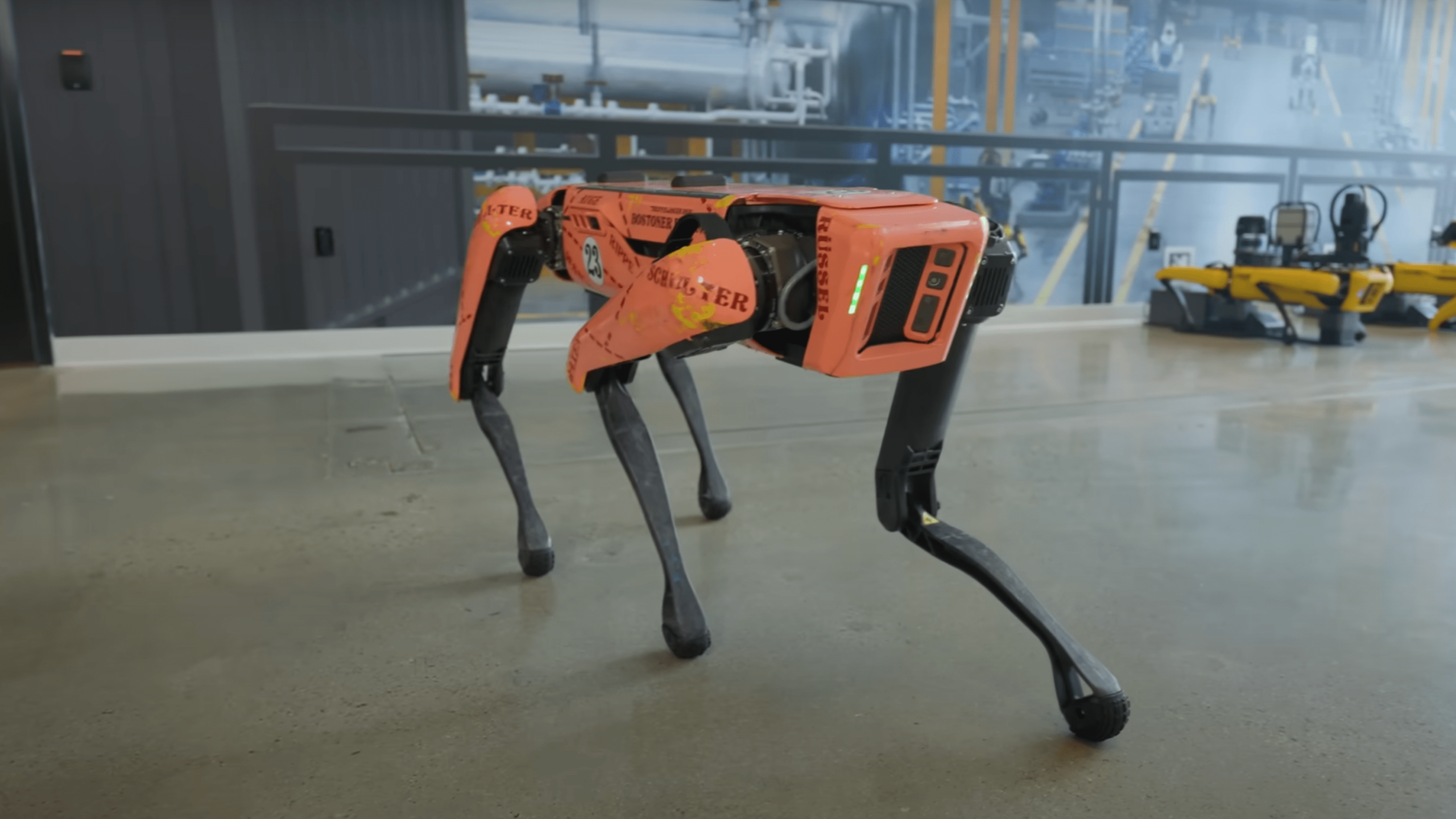
Get the Popular Science daily newsletter💡
Breakthroughs, discoveries, and DIY tips sent every weekday.
Many dog owners warmly remember the first time their furry pal finally nailed a new trick they spent weeks working on. Countless bacon-flavored treats and high-pitched words of encouragement are all offered up in service of achieving a passable “roll over” or “shake.” It turns out Boston Dynamics engineers go through a similarly painstaking reward process with their quadruped robot, “Spot.” The coveted trick in this case: a fluid, uninterrupted triple backflip. Good boy?

A video of the feat (above), shared by the company late last week, shows an orange-coated Spot load up on its two front legs, heave itself backward into the air, flip, and land back on all fours. Without pausing, the robo-dog repeats the same acrobatics twice more. When it finally comes to a standstill, Spot bows slightly and stretches out its front left leg, as if with a hint of braggadocious bravado. In the video, several of the robot’s engineers can be heard cheering in excitement after the trick.
At this point, readers are probably familiar with Boston Dynamics’ infamous robot videos. They often show the machines dancing, leaping, hurling heavy objects, and performing otherwise super human (or super dog) feats that blur the line between impressive and unsettling. Typically, those acrobatics serve as an eye-catching hook to draw viewers in before explaining more practical, real-world use cases—a point Boston Dynamics robotics engineer Arun Kumar acknowledges in the video.
“Obviously doing a backflip is not something our customers need,” Kumar said. “They might want it for fun.”
But there are some good reasons for engineers to push Spot to its limits. The quadruped is currently deployed at car manufacturing sites and in hazardous industrial areas around the world. In those environments, it’s not out of the question that the robot could slip, get knocked off balance, or bump into an obstacle and tip over. In those cases, it’s crucial for the robot to be able to help itself back up. Spot also often carries heavy loads (the camera attachment it uses to “see” can weigh close to 20 pounds) so getting back up isn’t always as simple as it sounds.

Kumar says those types of scenarios partly inspired the idea of the triple backflip. Engineers can control each individual motor in Spot’s legs, which function much like joints in organic creatures. He and his colleagues ran tests with the goal of “exert[ing] as much force as the motors can possibly handle.”
Related: [‘Parkour’ robot dog can leap, jump, and crawl its way through complex obstacle courses]
‘It’s a lot like training a dog’
Getting Spot to nail a triple backflip, on a practical level, actually shares some similarities with training a real dog. Spot’s software, like that of many advanced robots, gains new abilities through “reinforcement learning.” In computer science, the robot’s underlying software—or “brain”—is tasked with attempting a desired goal repeatedly and is given a “reward” when it succeeds. The robot’s reward (a simple script of code, in this case) is analogous to a Labrador getting a handful of Goldfish when it barely manages to plant its butt on the ground.
“It’s a lot like training a dog,” Kumar said of Spot’s reinforcement learning process.
But success in a computer simulation does not immediately translate to a triple backflip, or any other desired outcome, in the real world. “As soon as something works in sim [simulation] we’ll deploy it in hardware and it never works the first time,” Kumar added. “It’s going to fail somehow.”
Like training a dog, the solution to that mismatch is to try, try, and try again. In this case, engineers have access to all of Spot’s camera data, which helps them pinpoint exactly what caused a failure. They can then use that data to debug the software, apply a fix, and run the test again and again until the physical robot gets it right. Eventually, you wind up with a triple backflip.
Initially, Kumar says, engineers at Boston Dynamics weren’t even sure Spot could complete a single backflip. Now, he says, it’s possible the quadruped could keep flipping several more times without stopping, given the proper encouragement, of course.
Related: [Boston Dynamics gives Spot bot a furry makeover]

More deals, reviews, and buying guides
The PopSci team has tested hundreds of products and spent thousands of hours trying to find the best gear and gadgets you can buy.
























